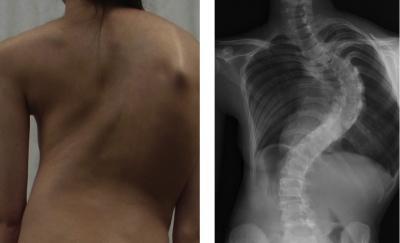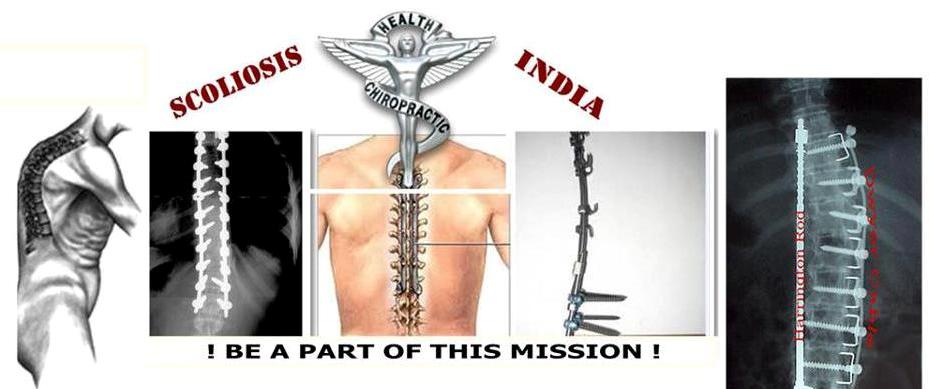The condition, adolescent idiopathic scoliosis (AIS), is a type of
scoliosis afflicting patients between 10 and 18 years of age, and is the
most common type of pediatric skeletal disease in which the specific
cause is not known. Therefore it is termed “idiopathic,” meaning is
arises spontaneously from an obscure or unknown cause.
However, many clinical and genetic studies suggest a contribution of
genetic factors as approximately 30 percent of AIS patients have some
family history of scoliosis. AIS affects about two percent of school-age
children, and primarily in those of Asian or Caucasian decent.
Scoliosis is a medical condition in which a person’s spine is curved
from side to side in a complex three-dimensional deformity, which
exceeds more than 10 degrees when viewed from the coronal plane or
sagittal plane. On isolated imaging the spine of a scoliosis patient may
look like an “S” or a “C”, rather than a straight line.
Scoliosis is classified as either congenital – caused by vertebral
anomalies present at birth, idiopathic – cause unknown, or is secondary
to another primary condition. Secondary scoliosis may be the result of
any number of neuromuscular conditions like spina bifida, cerebral
palsy, or physical trauma.
An estimated 65 percent of scoliosis cases are idiopathic, about 15
percent are congenital, and about 10 percent are secondary to a
neuromuscular disease.
The onset of adolescent idiopathic scoliosis generally does not
result in immediate discomfort or neurologic symptoms. The curve of the
spine does not put pressure on organs nor is there a noticeable shortness of breath seen with AIS, according to the Scoliosis Research Society (SRS).
When scoliosis begins in adolescent patients, often there is some
lower back pain. However, lower back pain is not uncommon as many teens
participate in a large number of activities without having good core
abdominal and back strength or flexibility. Therefore, the condition is
diagnosed by a doctor using tactile and imaging tests.
To correct the curvature, treatments include physical therapy, casting, bracing, and surgery – anterior and posterior fusion.
Research has been ongoing to identify the cause of AIS, including genetic factors.
Thus far there are no identifiable causes for this condition, but
researchers from the RIKEN Center for Integrative Medical Sciences in
Japan believes they’ve isolated the first gene to be associated with
AIS.
In the study, published in the journal Nature Genetics,
doctors Ikuyo Kou and Shiro Ikegawa, and their team wanted to identify
the genes associated with a susceptibility of acquiring the condition,
in hopes of understanding the causes and development of scoliosis.
The genome of 1,819 Japanese individuals afflicted with scoliosis
were compared it to 25,939 other Japanese individuals. This process
allowed the team to identify a gene associated with a susceptibility to
develop scoliosis on chromosome 6, GPR126. The association was
replicated in Han Chinese and Caucasian populations.
Probable G-protein coupled receptor 126 is a protein that in humans is encoded by the GPR126 gene.
This gene encodes a member of the adhesion-GPCR receptor family,
characterized by an extended extracellular region with a variable number
of N-terminal protein modules coupled to a TM7 region via a domain
known as the GPCR-Autoproteolysis INducing (GAIN) domain. It is involved
in the process of myelination.
It has also been found that variations in this gene can affect a
person’s stature as the gene is involved in the growth and development
of the spine during childhood. GPR126 is highly expressed in cartilage
and that suppression of this gene leads to delayed growth and bone
tissue formation in the developing spine. GPR126 is also plays a role in
human height and trunk length.
The researchers concluded, further studies will be necessary to properly elucidate how alterations in the GPR126 amplifies the risk of AIS.
Source : The Enquisitr , 13th May 2013


